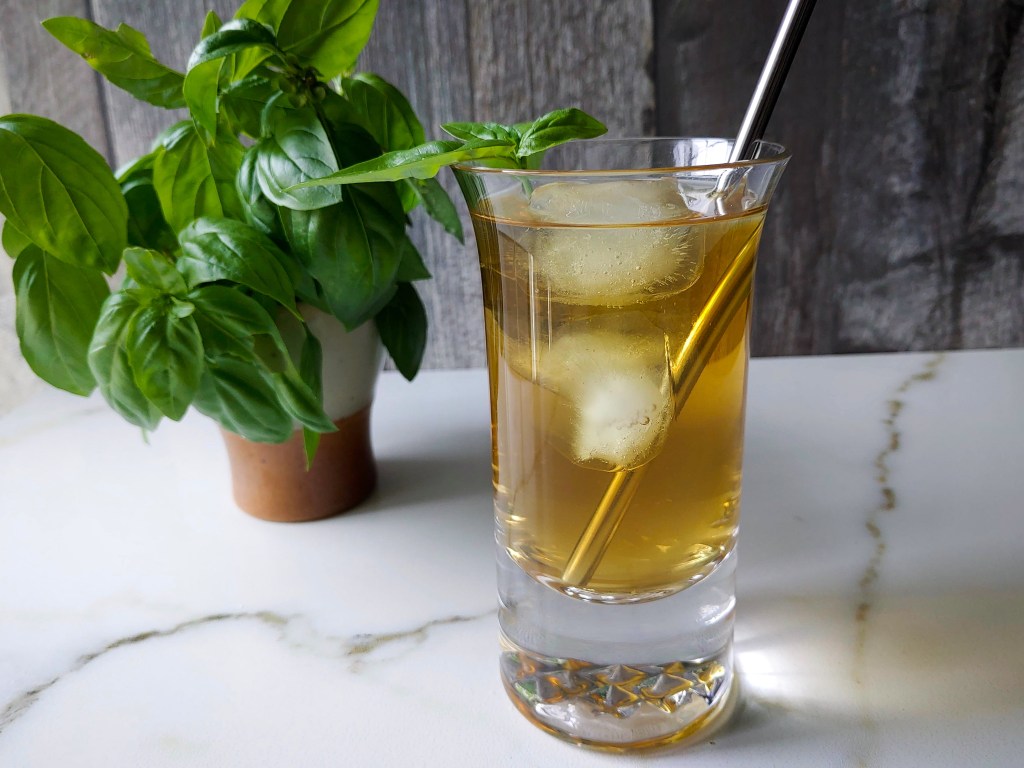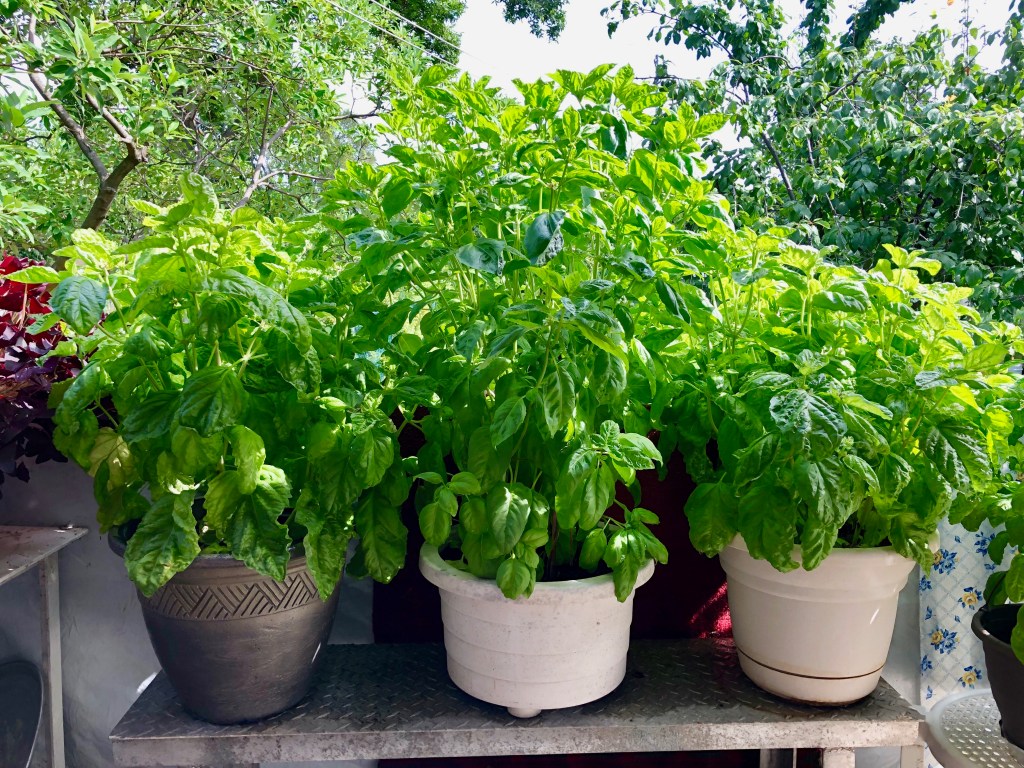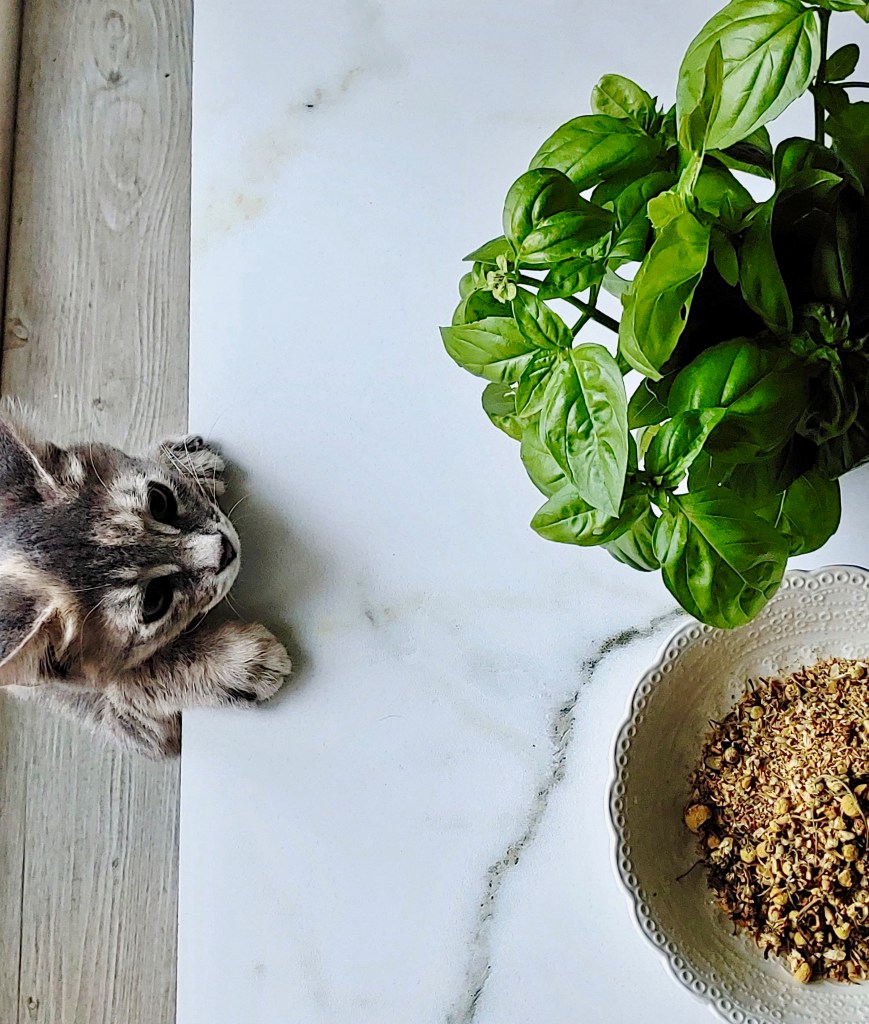Your cart is currently empty!

Taking the guesswork out of Greek cooking…one cup at a time

Greek chamomile tea made with basil and sweetened with honey, served over ice.
According to our mother, if you don’t have basil at home, you don’t have anything. That’s a little dramatic we think, and also problematic because keeping fresh basil alive during our Canadian winters is sort of impossible. Still, we think we understand what she’s trying to say.

Basil grows wild in Greece, and has been cultivated for thousands of years. It is an important Mediterranean herb despite the fact that it actually isn’t used regularly in Greek cooking; certainly not as often as oregano, mint, dill, parsley and bay leaves. Unless you are from parts of Greece which have a strong and significant Italian influence, like the glorious island of Corfu, basil usually only finds itself in tomato sauces and in teas. Our parents are from Messinia, Peloponnese and so fresh basil is not an ingredient they use often in their cooking. Despite this, they grow pots and pots of basil every year. Their back patio is lined with many varieties that then tend to with great care in order to then use it to flavour their homemade tomato sauce.

In the summer, visits to our parents’ home for lunch or dinner, or a simple Greek coffee with koulourakia, always takes place on their back patio where we are surrounded by the sweet smell of basil. Their outdoor dining table is set with a flowery tablecloth, or one sporting Greek motifs, and the centerpiece is always a small water glass displaying freshly cut basil. Our mother always insists that we smell the basil, and asks us if we have ever smelled anything so beautiful. The correct answer of course, is no, there is nothing that smells as wonderful as fresh basil. And then, to please us, she snips a few more sprigs and places them behind our ears. Even our husbands sometimes get this treatment.
Our mother often reminds us of basil’s religious significance. Known in Greek as vasilikos (or βασιλικός), it was so named by Empress Helene in 326 A.D. At that time, she found the cross upon which Jesus was crucified, buried along with 2 other crosses, those used in the crucifixion of the two thieves on either side of Christ. Close by there was a flowering basil plant. She named the plant vasilikos which means, “of the king.” In order to know which of the 3 crosses was the one Jesus was crucified on, a sick woman was brought to kiss each of the three crosses. When she kissed the True Cross, she was made well immediately. This religious event is called the Elevation of the Cross and it is celebrated on September 14th in the Orthodox church. It is one of two feast days during the year where a strict fast is kept (the other is the commemoration of the beheading of John the Forerunner on August 29). You can hear our mom tell you this herself (in Greek) by clicking here to watch a video taken on their back patio.
Our mom also maintains, as do many, that basil has some important medicinal qualities. For this reason she always taught us to use it in teas, and to drink basil infused liquids when we were feeling tired, achy, or just a little under the weather. She is also a firm believer in the healing properties of chamomile. You can read all about that here, in our post on chamomile tea. And so it was only natural then that when our mother felt we needed a double dose of goodness she would make us a cup of chamomile and basil tea that she would sweeten with just the right amount of honey. Our mother always serves this tea warm, and you can certainly enjoy it that way (we often do). However, given how hot our days have been recently, we tried cooling this tea and serving it over ice. The verdict: hot or cold, this tea is not only good for you, it’s just plain good!


Helpful hints
What if I can’t find chamomile flowers? Can I use chamomile tea bags?
We have a particular affinity for the dry chamomile flowers because that is what our mother always uses, and what we have easy access to. However, if all you can find is chamomile tea in tea bags – go for it! In reality, this will be easier to deal with than loose flowers that you have to separate out from your tea.

Can I use dry basil if I don’t have the fresh herb?
We’re usually pretty accommodating, but here we think we have to say, no. Fresh basil will give your tea a flavour that we don’t think you can replicate with the dry herb. Try to find fresh basil if you can.
Can I use another sweetener, or no sweetener at all?
Of course! The amount of honey we suggest is a range which will give you mildly sweet tea to just a little more than mildly sweet tea. You can omit the honey all together, although our mother would say that the honey itself has healing benefits, so you may want to reconsider.
Pin this recipe if you like it!


Looking for more lovely things to drink? How about these ideas:
We love hearing from you! If you have made our recipes, or if you have a question or comment, or simply want to say Hi!, please leave a comment below!

Leave a Reply